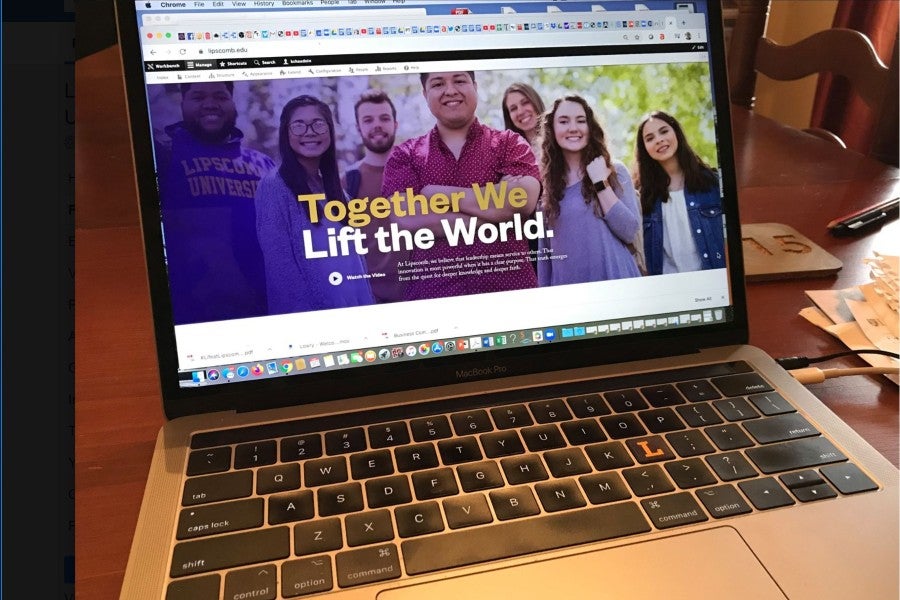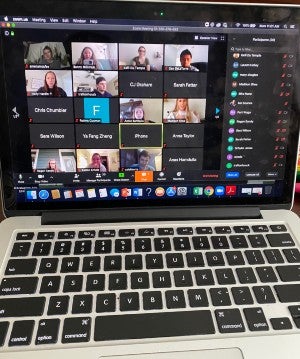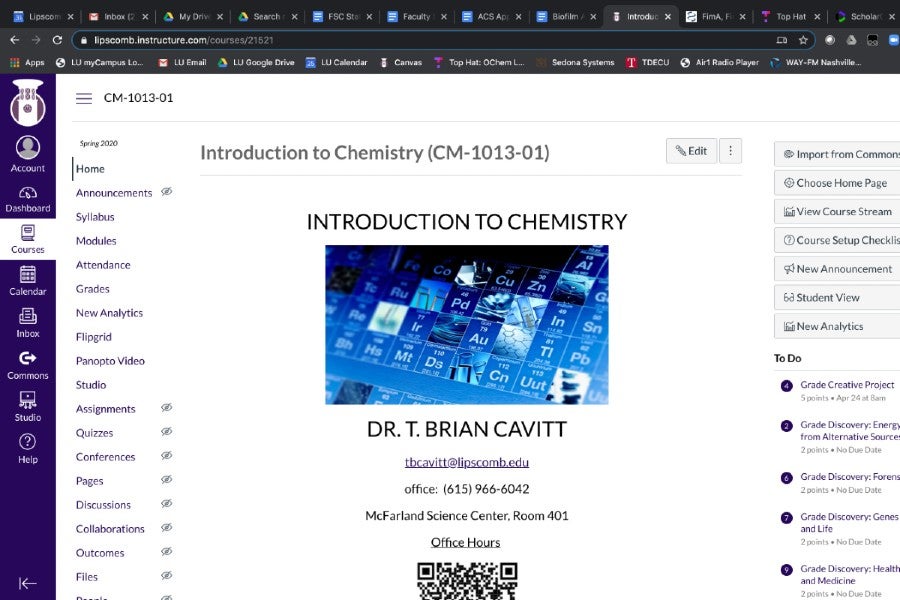Lipscomb responds to COVID crisis by shifting to remote teaching
Center for Teaching and Learning proves valuable resource during swift transition.
Janel Shoun-Smith | 615.966.7078 |

In response to local and national quarantine recommendations, on March 12 Lipscomb announced that it would be providing instruction for the rest of the spring 2020 semester remotely, using digital tools that have been managed by the internal Center for Teaching & Learning,
The changeover was kicked off with a full day of professional development for faculty on March 13 and after an extra week off after spring break, students began their coursework again—in remote digital formats—on Monday, March 30.
“Our faculty have shown great agility, imagination and energy in finding ways to assist students in successfully completing their coursework in the midst of a very real worldwide crisis,” said Craig Bledsoe, Lipscomb’s provost.
From at-home biology lab experiments like creating DIY yogurt to French conversation groups held through Zoom, a digital video and audio conferencing platform, Lipscomb’s faculty have answered the call to apply their teaching methods to today’s remote digital formats.
“While it isn't ideal to do labs online and students cannot perform the experiment at home, data processing without having done the experiment is a critical skill for all people–especially those pursuing careers in the health professions,” said Brian Cavitt, professor of chemistry who has had to transfer his organic chemistry lab curriculum, usually the hands-on portion of the course, to remote formats.
“We already use electronic lab reporting in the organic labs, so we provide data for our students and allow them to process it virtually,” he said.

Other faculty are recording lectures and/or lab demonstrations and then hosting student discussions afterward through Zoom, a format that educators call the “flipped classroom,” where students absorb knowledge first through listening and reading on their own time and class time is reserved for practice and discussion, said Hope Nordstrom, associate professor and director of the Center for Teaching and Learning.
The center has spearheaded the transition by leading the professional development day on March 13, developing a website compiling needed resources and a smooth system for requesting help, providing one-on-one instruction and consultation on learning strategies and making presentations on current issues confronting faculty in the classroom.
“We provided a lot of perspective on how to keep calm while also being realistic,” Nordstrom said. “We stressed that it’s important to clearly communicate your expectations to students and to also make it personalized through activities such as holding remote office hours to work with students. It’s important to show a willingness to try new things and to invite the students along with us in this journey.”
“The challenges facing faculty in this moment have been many, affecting every program on campus,” Bledsoe said. “Faculty members have learned how to conduct lively small group discussions in philosophy, how to move to virtual labs in the hard sciences, how to continue meeting professional objectives in programs such as engineering and nursing and how to make work in practicums practical.”
The theater department is using the university’s online learning system Canvas to have students record their monologues and then using Zoom for group discussions on the recorded performances, said Beki Baker, chair of the theater department.
Bonny Millimaki, associate professor in biology, is posting recorded lectures with study questions embedded in the program for students. Zoom question and answer sessions are held during their regular class time.
One lab expected for her microbiology class in the future is guiding students through making yogurt at their home, which teaches them about the growth needs of microbes and microbial metabolism.

On the student side of the equation, the Academic Success Center, which coordinates tutoring and academic accommodations to support student learning, has also ramped up its digital resources to make sure students get everything they need during the rest of the spring semester from afar.
“Tutoring needs will continue and perhaps increase as students begin to learn in an online setting,” said Randy Bouldin, vice provost of academic affairs. “Support will be provided in all areas of tutoring; the writing studio, math lab, biology recitations, chemistry, physics and peer-to-peer tutoring.
“Plans and processes have been developed to allow students to access tutors via Zoom and receive the help they need. Tutoring schedules will be updated weekly, and students will receive an email each Sunday with a link to the approaching week’s tutoring opportunities.”
In addition, Beaman Library continues to offer support to students needing to do research, complete assignments and finish papers and projects, Bouldin said. Library faculty and staff are available remotely to answer questions, and Lipscomb's online catalog continues to provide the electronic resources normally available to students.
In preparation for the summer and fall, academic advisers are meeting remotely with each of their advisees providing guidance for course scheduling, Bouldin said.